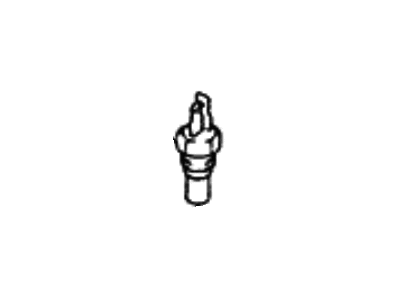×
- Hello
- Login or Register
- Quick Links
- Live Chat
- Track Order
- Parts Availability
- RMA
- Help Center
- Contact Us
- Shop for
- Hyundai Parts
- Hyundai Accessories


My Garage
My Account
Cart
Genuine Hyundai Excel Coolant Temperature Sensor
Coolant Water Temperature Sensor- Select Vehicle by Model
- Select Vehicle by VIN
Select Vehicle by Model
orMake
Model
Year
Select Vehicle by VIN
For the most accurate results, select vehicle by your VIN (Vehicle Identification Number).
4 Coolant Temperature Sensors found
Hyundai Excel Sensor Assembly-Water Temperature
Part Number: 39220-21320$45.09 MSRP: $62.81You Save: $17.72 (29%)Ships in 1-3 Business DaysHyundai Excel Sensor Assembly-Water Temperature
Part Number: 39220-21300$45.09 MSRP: $62.81You Save: $17.72 (29%)Ships in 1-3 Business DaysHyundai Excel Sensor Assembly-Water Temperature
Part Number: 39220-21310$45.09 MSRP: $62.81You Save: $17.72 (29%)Ships in 1-3 Business Days
Hyundai Excel Coolant Temperature Sensor
This sensor is well known as Coolant Temperature Sensor which is mounted in cars of Hyundai Excel and its work is connected with measurement of coolant temperature to maintain engine efficiency. The main function of this sensor is to regularly check the temperature of the coolant and thus contribute to the continued proper running of the engine. The Hyundai Excel vehicles over the years have used the Coolant Temperature Sensors of different types as listed in the table below. These variations in types of sensors have enabled development in aspects that relate to monitoring of the vehicle as well as the accuracy of the system hence improving on the performance of the vehicle as well as its durability.
If you are looking for affordable high-quality OEM Hyundai Excel Coolant Temperature Sensor, then you have come to the prime place. Our website provides a large amount of genuine Hyundai Excel Coolant Temperature Sensor at unbeatable prices. All our parts come backed with the manufacturer's warranty.
Hyundai Excel Coolant Temperature Sensor Parts Questions & Experts Answers
- Q: What is the location and function of the coolant temperature sensor on Hyundai Excel?A:On 1986 to 1989 models, the temperature gauge coolant sender is threaded into the bottom of the intake manifold, behind the distributor. For 1990 through 1994 models, the sending unit is threaded into the intake manifold near the thermostat cover. On 1990 to 1994 carbureted models, a thermo switch is located below the temperature sender on the intake manifold to actuate the purge control valve of the Evaporative Emissions System, the choke breaker, and the Exhaust Gas Recirculation (EGR) valve. On 1990 and later fuel-injected models, the temperature sensor and temperature sender are located near the thermostat. On 1995 through 1999 models, the lower sensor is the temperature sender unit for the temperature gauge, while the upper sensor is the Engine Coolant Sensor (ECT) used by the ECM. To check if the coolant temperature gauge is inoperative, verify the fuses first. If the temperature gauge indicates Hot shortly after cold engine start, disconnect the wire(s) at the coolant temperature sending unit. If the gauge reading drops, replace the sending unit. If the reading remains high, there might be a shorted wire to the gauge or a faulty gauge. Note that on 2000 and later models, the temperature sending unit function is integrated into the Engine Coolant Temperature (ECT) sensor, requiring a scan tool or code reader for diagnosis. If the coolant temperature gauge fails to indicate after engine warming, and fuses are fine, disconnect the green/yellow wire at the sending unit, connect it to a clean ground, turn on the ignition, and if the gauge shows Hot, replace the sending unit. If the gauge still doesn't work, there could be an open circuit or a faulty gauge. Further testing involves measuring sender resistance by unplugging the wiring and connecting an ohmmeter between the sender terminal and a ground point. The sender unit's resistance should match specifications for the coolant temperature. A sender reading open or short circuit will provide a constant full hot or full cold signal when the ignition switch is ON. For replacement, with the engine cool, release any pressure by removing and replacing the radiator cap, disconnect the wiring harness from the sending unit, apply sealer to the threads of the new sending unit, unscrew the old sending unit and quickly install the new one to prevent coolant loss, tighten securely, connect the wiring harness, refill the cooling system, run the engine, and check for leaks and proper temperature gauge operation on the instrument panel.
Related Hyundai Excel Parts
Browse by Year
1994 Coolant Temperature Sensor 1993 Coolant Temperature Sensor 1992 Coolant Temperature Sensor 1991 Coolant Temperature Sensor 1990 Coolant Temperature Sensor 1989 Coolant Temperature Sensor 1988 Coolant Temperature Sensor 1987 Coolant Temperature Sensor 1986 Coolant Temperature Sensor 1985 Coolant Temperature Sensor







